Purdue Chemistry - A Brief History
 The Department of Chemistry of Purdue University was one of the founding programs of the University, established in 1874 under the federal Morrill Land-Grant Act. The following year, the first degree awarded by the University was a Bachelor of Science in chemistry. Harvey W. Wiley, Purdue’s first professor of chemistry, served as a faculty member for nine years before being appointed to the position of chief chemist of the Bureau of Chemistry within the U.S. Department of Agriculture. Wiley is remembered for championing the development of the Pure Food and Drug Act—the nation’s first federal regulation of foods and drugs—in 1906. This act led to the establishment of today’s Food and Drug Administration.
The Department of Chemistry of Purdue University was one of the founding programs of the University, established in 1874 under the federal Morrill Land-Grant Act. The following year, the first degree awarded by the University was a Bachelor of Science in chemistry. Harvey W. Wiley, Purdue’s first professor of chemistry, served as a faculty member for nine years before being appointed to the position of chief chemist of the Bureau of Chemistry within the U.S. Department of Agriculture. Wiley is remembered for championing the development of the Pure Food and Drug Act—the nation’s first federal regulation of foods and drugs—in 1906. This act led to the establishment of today’s Food and Drug Administration.
In 1907, the University opened its first chemistry building under the guidance of Winthrop E. Stone, chemistry professor and University president from 1900 to 1921. Within 20 years, the department outgrew this facility and planning began for an expanded classroom and laboratory building. Under the direction of Percy N. Evans, chair of the department from 1900 to 1925, the first course in chemical engineering was offered in 1902, and in 1911 an independent School of Chemical Engineering was established.
"We’ve got to build a big building. Chemistry is going to grow!”
- Richard B. Moore, Purdue University Dean of Science, 1926-1931
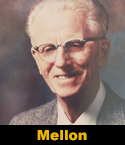 Edward C. Elliott, Purdue University president from 1922 to 1945, led the University toward an increased emphasis on scientific research and graduate education, and in 1927 trustees approved the construction of a new and expanded chemistry building. Work commenced in 1928 under the direction of Melvin G. Mellon, professor of chemistry, and the first phase of the new chemistry building was inaugurated in 1930. In the same year, Purdue awarded its first Ph.D. degree in chemistry. Plans to complete the building were placed on hold, however, as a result of the Great Depression and then World War II.
Edward C. Elliott, Purdue University president from 1922 to 1945, led the University toward an increased emphasis on scientific research and graduate education, and in 1927 trustees approved the construction of a new and expanded chemistry building. Work commenced in 1928 under the direction of Melvin G. Mellon, professor of chemistry, and the first phase of the new chemistry building was inaugurated in 1930. In the same year, Purdue awarded its first Ph.D. degree in chemistry. Plans to complete the building were placed on hold, however, as a result of the Great Depression and then World War II.
Following World War I, the department expanded quickly, buoyed by the nation’s increasing interest in science. By 1931, more than 2,000 students had enrolled in chemistry department courses, including 38 Master of Science and Ph.D. candidates in five areas: analytical, biological, inorganic, organic, and physical chemistry. The department commanded international renown for the research of faculty members Henry B. Hass and Earl T. McBee in vapor-phase chlorination and fluorination, as well as nitration of paraffins. Their research led to the commercial development of improved refrigerants, anesthetics, insecticides, and other products.
Rapid expansion of the department during World War II resulted in Purdue graduating one in eight of all chemistry Ph.Ds. produced in the United States in the 1943–1944 school year. Then-chair of the department Henry B. Hass proposed, and faculty agreed, to limit all research to projects relating to the nation’s war efforts. Research on the synthesis of rubber and antimalarial drugs became top priorities, along with various contributions to the Manhattan Project.
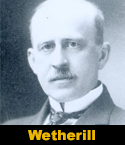 When approval of the final phase of planned construction on the chemistry building was granted by the Indiana General Assembly in 1950, expansion was sorely needed. Dedicated in 1955 as the R. B. Wetherill Laboratory of Chemistry, the addition more than doubled the available space of the original wing. Richard Benbridge Wetherill (1859–1940) was a local surgeon, lecturer in the Purdue University School of Pharmacy, and donor to the University. As a student, Wetherill had taken a course in chemistry taught by Professor Wiley. His father, Charles M. Wetherill, was himself a prominent scientist in the U.S. Department of Agriculture and a professor of chemistry at Lehigh University in Bethlehem, Pennsylvania.
When approval of the final phase of planned construction on the chemistry building was granted by the Indiana General Assembly in 1950, expansion was sorely needed. Dedicated in 1955 as the R. B. Wetherill Laboratory of Chemistry, the addition more than doubled the available space of the original wing. Richard Benbridge Wetherill (1859–1940) was a local surgeon, lecturer in the Purdue University School of Pharmacy, and donor to the University. As a student, Wetherill had taken a course in chemistry taught by Professor Wiley. His father, Charles M. Wetherill, was himself a prominent scientist in the U.S. Department of Agriculture and a professor of chemistry at Lehigh University in Bethlehem, Pennsylvania.
In 1967, the University approved construction of a second chemistry building adjacent to the Wetherill Laboratory. It was completed in 1972 and in 1987 was dedicated by the Board of Trustees as the Herbert C. Brown Laboratory of Chemistry, in honor of Brown’s shared winning of the 1979 Nobel Prize in Chemistry.
Today, the Department of Chemistry at Purdue University continues its legacy as one of the largest chemistry programs in the nation with more than 300 undergraduate chemistry majors and 300 graduate students. Since its inception, the University has awarded more than 2,500 Ph.D. degrees in chemistry— testimony to its important role as a center for chemical education in the United States. Currently, the R. B. Wetherill Laboratory of Chemistry accommodates the nearly 7,000 students per week enrolled in chemistry courses at Purdue.
Developments in Organic Synthesis
Purdue University’s Department of Chemistry has a long history of advances in the area of synthetic organic chemistry. Research performed in the Wetherill building includes developments in vapor-phase nitration of saturated hydrocarbons, the discovery of hydroboration and its application to numerous synthetic pathways, and palladium-catalyzed cross-coupling. This work has provided versatile techniques for the creation of pharmaceuticals, agricultural chemicals, nitroparaffin-based explosives, and other products.
The research of Henry B. Hass, Earl T. McBee, Herbert C. Brown, and Ei-ichi Negishi in organic synthesis all share one common feature: They each gave rise to new methods of synthesizing organic compounds with well-controlled molecular structure.
Henry B. Hass (1902–1987)
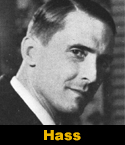 Henry B. Hass joined the department in 1928 after receiving his Ph.D. degree at Ohio State University under William L. Evans. He served as chair of the department from 1937 to 1949 and became widely known for his studies of chlorination of hydrocarbons and nitration of paraffins. This research made possible the commercial-scale production of a wide variety of products including explosives based on nitroparaffins. During World War II, Hass became involved in the Manhattan Project, developing methods for preparing fluorocarbons used by the Oak Ridge National Laboratory in the production of enriched uranium. Hass believed that research at state-supported education institutions should be of practical value to the economy as a whole in addition to contributing to knowledge. This belief guided the department’s growth during the 1930s and early 1940s.
Henry B. Hass joined the department in 1928 after receiving his Ph.D. degree at Ohio State University under William L. Evans. He served as chair of the department from 1937 to 1949 and became widely known for his studies of chlorination of hydrocarbons and nitration of paraffins. This research made possible the commercial-scale production of a wide variety of products including explosives based on nitroparaffins. During World War II, Hass became involved in the Manhattan Project, developing methods for preparing fluorocarbons used by the Oak Ridge National Laboratory in the production of enriched uranium. Hass believed that research at state-supported education institutions should be of practical value to the economy as a whole in addition to contributing to knowledge. This belief guided the department’s growth during the 1930s and early 1940s.
Earl T. McBee (1906–1973)
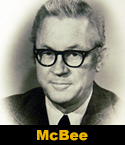 Earl T. McBee, an organic chemist who earned a Ph.D. degree from Purdue University under Hass, joined the department faculty in 1936. During WWII, he directed nearly 100 people on campus working on the Manhattan Project. McBee’s research group developed methods for the synthesis of a wide array of halogenated hydrocarbons. Other projects in fluorine chemistry led by McBee included the synthesis of improved refrigerants, anesthetics, and insecticides. After he succeeded Hass as chair of the department in 1949, he oversaw the planning and construction of the second phase of the Wetherill building. McBee continued to serve as chair until 1967 and remained on the faculty until his death in 1972.
Earl T. McBee, an organic chemist who earned a Ph.D. degree from Purdue University under Hass, joined the department faculty in 1936. During WWII, he directed nearly 100 people on campus working on the Manhattan Project. McBee’s research group developed methods for the synthesis of a wide array of halogenated hydrocarbons. Other projects in fluorine chemistry led by McBee included the synthesis of improved refrigerants, anesthetics, and insecticides. After he succeeded Hass as chair of the department in 1949, he oversaw the planning and construction of the second phase of the Wetherill building. McBee continued to serve as chair until 1967 and remained on the faculty until his death in 1972.
Herbert C. Brown (1912–2004)
 Herbert C. Brown’s work in organoboranes famously arose from an auspicious beginning: For his 1936 graduation from the University of Chicago, his girlfriend and chemistry classmate (and later wife) Sarah Baylen presented Brown with a graduation gift of a text titled The Hydrides of Boron and Silicon. Finding the subject interesting, Brown initiated a research program in borane chemistry for his Ph.D. thesis at the University of Chicago under Hermann I. Schlesinger, graduating in 1938.
Herbert C. Brown’s work in organoboranes famously arose from an auspicious beginning: For his 1936 graduation from the University of Chicago, his girlfriend and chemistry classmate (and later wife) Sarah Baylen presented Brown with a graduation gift of a text titled The Hydrides of Boron and Silicon. Finding the subject interesting, Brown initiated a research program in borane chemistry for his Ph.D. thesis at the University of Chicago under Hermann I. Schlesinger, graduating in 1938.
After teaching at the University of Chicago and Wayne State University in Detroit, Michigan, Brown was invited to join the faculty of Purdue University in 1947.
At Purdue, Brown’s research program continued to center on boranes, and, in 1956, he discovered a method of converting unsaturated organic molecules into organoboranes through a process known as hydroboration. Using organoboranes, chemists are able to produce molecules with extremely precise geometric structures—an important advantage in the manufacture of biologically active substances such as pharmaceuticals, pheromones, and other complex molecules.
It was this research that led to Brown being awarded the 1979 Nobel Prize in Chemistry (shared with German colleague Georg Wittig) and the 1980 American Chemical Society Priestley Medal, ACS’s most prestigious award.
"In 1938, when I received my Ph.D. degree, I felt that organic chemistry was a relatively mature science, with essentially all of the important reactions and structures known... I now recognize that I was wrong... We have at hand many valuable new techniques. I know that many of the students of today feel the same way that I did in 1938. But I see no reason for believing that the next 40 years will not be as fruitful as in the past.”
- Herbert C. Brown, 1979 Nobel Prize in Chemistry Lecture
Ei-ichi Negishi (1935–2021)
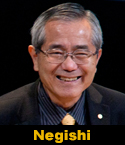 Ei-ichi Negishi received a Bachelor of Engineering from the University of Tokyo in 1958 and a Ph.D. degree from the University of Pennsylvania in 1963 (studying under Allan R. Day). In 1966, Negishi entered Purdue as a post-doctoral fellow with Herbert C. Brown. In 1979, after working seven years at Syracuse University, Negishi returned to Purdue.
Ei-ichi Negishi received a Bachelor of Engineering from the University of Tokyo in 1958 and a Ph.D. degree from the University of Pennsylvania in 1963 (studying under Allan R. Day). In 1966, Negishi entered Purdue as a post-doctoral fellow with Herbert C. Brown. In 1979, after working seven years at Syracuse University, Negishi returned to Purdue.
Negishi is credited for discovering “Negishi coupling,” a reaction that involves palladium-catalyzed cross-coupling that is frequently used by organic chemists. Through the work of Negishi and the men with whom he shared the 2010 Nobel Prize in Chemistry—Richard Heck of the University of Delaware and Akira Suzuki of Hokkaido University, who was once a post-doctorate researcher with Brown—organometallic reactions have increased the versatility of organic syntheses, providing new routes to important chemicals used in the production of fertilizers, pharmaceuticals, plastics, and other products.
"If you pursue excellence, great things will follow.”
- Ei-ichi Negishi, Purdue University College of Science 2010 Nobel Laureate Celebration Dinner
Citation:
Related links:
Purdue Chemistry Department Heads
Manhattan Project research at Purdue propelled Chemistry's postwar growth